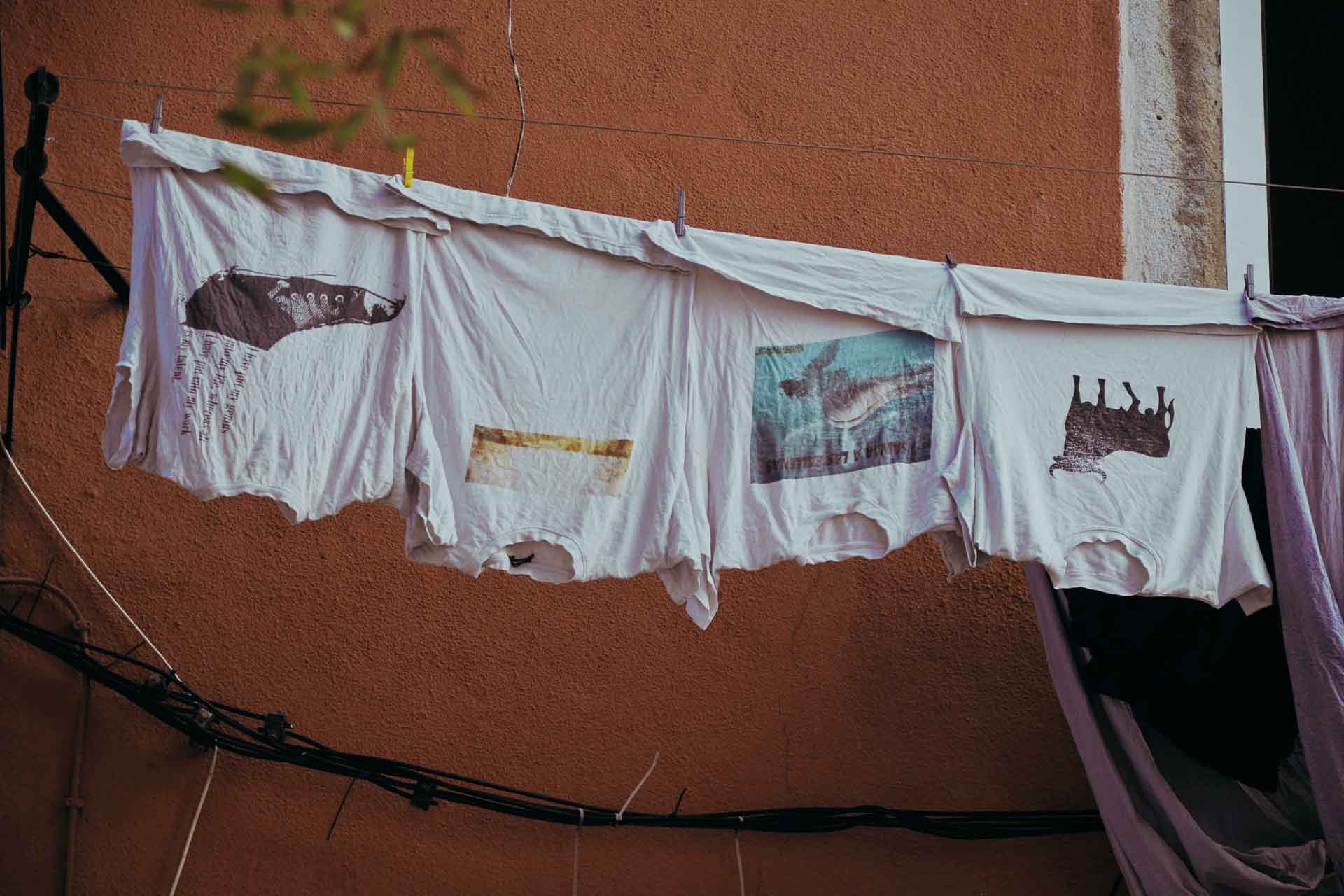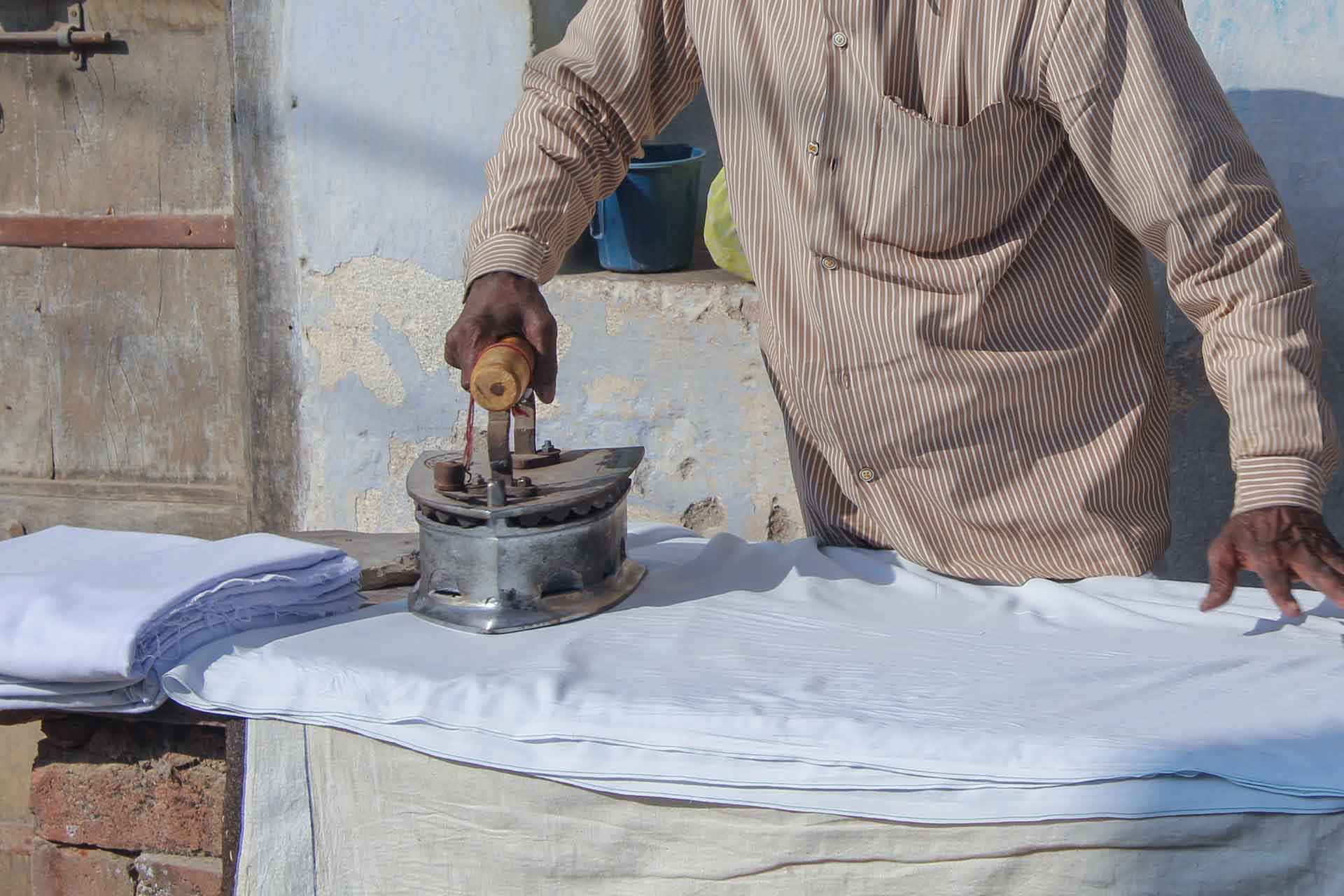Did you order a printed T-shirt and are wondering how to take care of it so that the print looks as good as on the day you received your order?
In this article, you will find answers to the most important questions about care – washing, ironing, and drying printed T-shirts. Here are some practical tips that will help extend the life of your item!
Proper Care for T-Shirts
Although modern printing technologies on T-shirts provide high quality and durability of the print, to avoid its damage, certain recommendations must be followed. Regardless of which salon printed the design, these are universal tips that anyone can use. Proper care for the T-shirt guarantees the durability of the image.
How to Wash Printed T-Shirts?
Printed T-shirts should be washed at 40 degrees, preferably using a program for delicate fabrics. It is very important to avoid high temperatures. Handling printed T-shirts carefully is crucial to preserve the print’s integrity and the fabric’s quality. Start by turning the T-shirt inside out; this minimizes the direct exposure of the print to the abrasive actions within the washing machine. Opt for a gentle detergent and avoid bleach or fabric softeners, which can be harsh on printed designs. Choose a gentle wash cycle to reduce friction and avoid overloading the washer, which can lead to excessive rubbing and wear on the print.
If possible, consider hand washing your printed T-shirts in lukewarm water with a mild detergent, gently agitating without harsh scrubbing. After washing, avoid wringing out the T-shirt. Wringing can stretch the fabric and distort the print. Instead, gently squeeze out the excess water. Remember, the key is in gentle care and avoiding extreme conditions that could damage the print.

How to Dry Printed T-Shirts?
To properly dry printed T-shirts and maintain their quality, it’s best to air dry them whenever possible. This method is gentle and avoids the high heat that can damage the print. Lay the T-shirt flat on a clean, dry towel or hang it on a clothesline or drying rack, ideally in a shaded, well-ventilated area to prevent color fading from direct sunlight. If you must use a dryer, opt for the lowest heat setting and remove the T-shirt while it is still slightly damp to minimize the risk of heat damage. Over drying, especially on high heat, can cause the print to crack or peel, and it may also shrink the fabric. Always avoid tumble drying, as the tumbling action can be rough on the print. If you find it necessary to iron the T-shirt, never iron directly over the print. Instead, turn the shirt inside out and use a low heat setting, or place a thin cloth over the print to protect it. Following these steps will help ensure that your printed T-shirts stay vibrant and in good condition for a longer time. Gentle care and avoiding extreme heat are the keys to preserving the quality and appearance of printed garments.

How to Iron Printed T-Shirts?
When ironing printed T-shirts, it’s crucial to use a method that protects the print while effectively removing wrinkles. Start by turning the T-shirt inside out, ensuring the print is on the inside. This is the first line of defense against direct heat damage. Use your iron on a low heat setting (110°C to 130°C, 230°F to 265°F), appropriate for delicate and synthetic fabrics, typically indicated by a single dot or a low temperature range on the iron. Avoid ironing directly over the printed area as much as possible. If you need to iron over the print, place a thin protective cloth or pressing cloth between the iron and the fabric. This acts as a buffer, distributing the heat evenly and preventing the print from direct exposure to high temperatures.
Avoid using steam, as the moisture can adversely affect the print. Instead, gently iron the T-shirt, focusing on non-printed areas. After ironing, hang the T-shirt immediately to prevent new wrinkles from forming. This careful approach ensures that your printed T-shirt remains in excellent condition, with the print intact and the fabric smooth. Remember, the key is gentle heat and protective measures to maintain the quality of your printed T-shirts.

Do the Care Methods Differ Depending on the Printing Technique Used?
Yes, the care methods for printed T-shirts can differ depending on the printing technique used. Different printing techniques have varying levels of durability and react differently to washing, drying, and ironing. Here are some common printing methods and their specific care considerations:
- Screen Printing: Known for its durability. T-shirts with screen printing usually withstand washing and drying well, but it’s still advisable to wash in cold water and air dry to prevent the print from cracking. Ironing should be done inside out to avoid direct contact with the print.
- Heat Transfer Printing: These prints are more vulnerable to heat and can peel or crack if not cared for properly. Washing should be done in cold water and on a gentle cycle. Avoid tumble drying and ironing directly on the print. Air drying is recommended.
- Direct to Garment (DTG, used on welikewelove.com): DTG prints are known for their high detail and color range but can be sensitive to harsh washing. Wash inside out in cold water, use a gentle cycle, and avoid harsh detergents. Air dry to maintain the print quality, and if ironing is necessary, do it inside out on a low heat setting.
- Dye Sublimation: This technique dyes the fabric itself and is very durable. Garments with sublimation printing can usually withstand machine washing and drying better than other types. However, it’s still safer to use cold water and air dry. Ironing is generally safe at any temperature since the ink is in the fabric.
- Vinyl Graphics: Vinyl prints require careful handling as they can crack and peel. Wash these garments inside out in cold water and on a gentle cycle. Air drying is best to prevent the vinyl from melting or warping. Avoid ironing directly on the vinyl.
In all cases, it’s important to check the garment’s care label for specific instructions. Despite the printing technique, a gentle approach to washing, drying, and ironing will help extend the life and appearance of your printed T-shirts. Remember, avoiding high heat and harsh treatments is usually the key to preserving these garments.
How Many Washes Can Printed T-Shirts Withstand?
The number of washes a printed T-shirt can withstand before showing signs of wear largely depends on the printing technique used, the quality of the materials, and how the shirt is cared for. Generally, a well-made printed T-shirt can withstand many washes, often several dozen to over a hundred, while maintaining good print quality, provided it’s cared for properly. Here are some factors to consider:
Printing Technique:
- Screen Printing: Known for its durability, screen-printed T-shirts can often withstand numerous washes without significant fading or peeling, especially if the ink has been properly cured.
- Direct-to-Garment (DTG): DTG prints are generally durable but may start to fade after 50-100 washes. The longevity depends on the ink quality and the printer.
- Heat Transfer: This method can be less durable, with the print potentially starting to crack or peel after 25-50 washes.
- Dye Sublimation: Extremely durable, as the dye becomes part of the fabric. These can withstand 100+ washes without noticeable fading.
- Vinyl: Can vary, but generally, vinyl prints start to crack or peel after around 30-50 washes if not properly cared for.
Quality of Materials: The quality of both the T-shirt fabric and the printing materials plays a significant role. Higher quality materials tend to withstand washing better.
Washing and Care: Gentle washing and drying significantly increase the number of washes a printed T-shirt can endure. Washing in cold water, using mild detergents, avoiding bleach and fabric softeners, and air drying can all help extend the life of the print.
Frequency of Wear and Wash: The more frequently a T-shirt is worn and washed, the quicker the print may show signs of wear.
In conclusion, while there’s no definitive number for all printed T-shirts, proper care can significantly extend the life of a printed T-shirt’s design, regardless of the printing technique. It’s always best to follow the specific care instructions provided with the garment.

